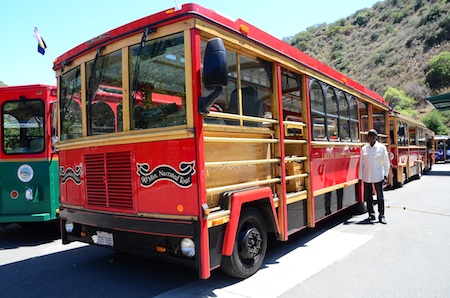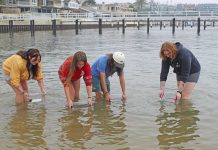
— NB Indy file photo ©
The Balboa Peninsula Shuttle Program is rolling forward after the City Council this week voted to authorize the submittal of a grant application to the Orange County Transportation Authority to help fund the shuttle program.
The grant application for the shuttle will be submitted under the Project “V,” OCTA’s Community Based Transit Circulators Program that enables jurisdictions to develop local transit services to meet the needs in areas not adequately served by regional transit.
The program will pay up to 90 percent of the infrastructure as well as operation and maintenance costs to a maximum of $550,000 annually for up to seven years. In addition, up to $25,000 is available for marketing and $50,000 for planning purposes.
The total cost for the shuttle program is estimated at $224,430 for the first year of operation, including one-time capital and planning costs. With the grant, the city’s contribution is approximately $20,937 (including one-time capital and planning costs) to be adjusted for the following years at an estimated yearly cost of $9,337.
Additional funds may be required to lease privately-owned parking spaces located off the peninsula. These additional costs will be identified and included in the grant application so that the city’s contribution would be limited to 10 percent of these costs.
This all comes on the heels of the Balboa Peninsula Feasibility Study which was developed last year with oversight from the Balboa Village Advisory Committee and input from local stakeholders to determine a transportation system similar to Laguna Beach as part of the revitalization program for the peninsula.
Public transportation on the peninsula becomes an even more important issue with OCTA’s proposal to revise the bus routes into and out of Newport Beach and possibly eliminate Route 71, the only transit service offered on the peninsula.
According to the BVAC committee members at their last meeting, the likelihood of getting a grant is very good. The study conducted by Dan Boyle and Associates determined a viable market for the shuttle in the peninsula, an important criteria for receiving grant money. The proposal for the operation of the shuttle has been based on their findings.
Council Member Tony Petros remarked at the BVAC meeting that in order to make this a successful program, “manageable first bites” need to be taken with regards to the shuttle’s roll-out. The BVAC committee members agreed the whole thing needs to be networked carefully for the possibility of success. This includes recruiting the right vendors and developing the best times, days and frequency of routes. BVAC committee member Ralph Rodheim stated that “we have to get it right the first time.”
The general concept is to utilize a parking area located off the peninsula for visitors to park and then access various locations along the peninsula. Currently the Hoag Hospital Lower Lot parking area is the likely site for the shuttle’s start and endpoint.
Four to five shuttles would operate on a 15-minute schedule between 10 a.m. and 9:30 p.m. during the summer weekends (Memorial Day to Labor Day), as well as Independence Day. The shuttles would be available for free to riders.
Currently the city wants to use an open air trolleys similar to those used in Laguna Beach, but initially might have to use vans until it is determined the program is a success in order for the operator to invest in trolleys.
The trolleys will be electric powered and will include bike racks, options for beach gear and baggage (for Catalina Flyer passengers), technology for locating vehicles and/or use of smart phone app.
Awarding of funds is expected in June 2016. If successful, the city staff will continue to refine the program with guidance from the BVAC and engagement from Visit Newport Beach, who will assist in developing an aggressive marketing campaign.
The shuttle program is expected to start operating in May 2017.




